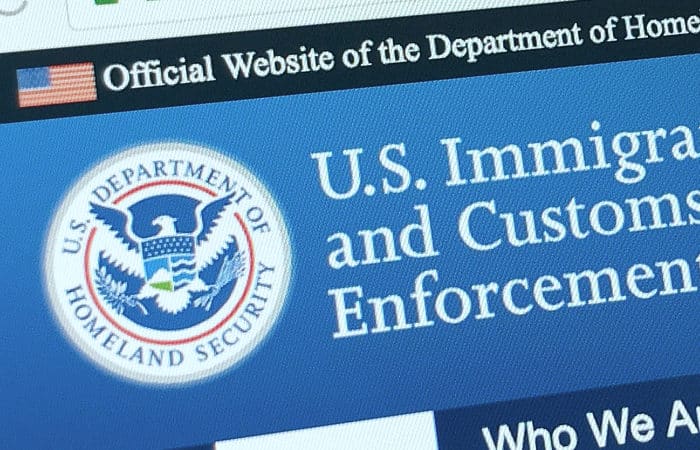5 Steps to Prepare Your Staff for an ICE Audit
ICE auditors have issued an unprecedented number of I-9 ICE audits over the last three weeks, totaling 3,282 NOI’s to employers across the country.
The recent wave of audits targets hospitality, agriculture, food processing, health care, landscaping, and construction industries. It is anticipated that thousands of more audits will be issued in the coming weeks.
If you’re like most HR executives, the possibility of an ICE audit sparks many questions and concerns:
- Are our Form I-9s ready for a federal audit?
- What will an ICE audit find?
- How large could the fines be?
- Could this lead to publicity that we don’t want?
- How will this reflect on me and my team?
The unfortunate event of being served a Notice of Inspection (NOI) by ICE can be overwhelming and stressful, with good reason: It might eventually result in costly fines. For this reason, it’s imperative that your team take the necessary steps to properly prepare for a potential ICE audit.
Why act before you get an ICE audit?
During an ICE Form I-9 inspection, an organization is granted just three days to pull together a proper response package. This 72-hour window leaves little time for preparation and strategic planning. Therefore, it’s crucial that your team take the necessary steps today to ensure that your I-9s are consistently reviewed and updated.
The time to obtain a parachute is well before you need it. And the time to lay the groundwork for the I-9 audit is before you’ve been served with an ICE audit.
5 steps to prepare for an ICE audit
There are five crucial steps every organization should take in advance of an I-9 ICE audit, in order to make the best use of your 72-hour response period:
Step 1: Communicate your chain of command for an ICE audit
A Notice of Inspection (NOI) can be served to any one of your company locations, including office, retail, or warehouse sites. Therefore, it’s crucial that you establish procedures to ensure that upon receiving an NOI, each member of your team will know the exact next steps to take. Because of the strict 72-hour timeframe, it’s imperative that you define exactly who in your organization should be notified, and what should happen if they can’t be reached.
It’s important to note that the NOI may be presented in person by an ICE or federal representative or sent via certified mail. Having a uniformed officer show up at your door will likely set off warning bells among your staff. However, in the event that an NOI is delivered by certified mail, your staff may not feel the need for immediate action. Properly educate your staff to ensure an official ICE audit is not misplaced or mistaken for ordinary mail.
Once an NOI is received, we suggest that staff take immediate action to notify the highest level person at the facility. Again, due to the extreme time-sensitivity of an ICE audit, it’s important that a manager is informed in-person, not via voicemail nor email. The 72-hour clock begins as soon as the NOI is received.
Once the highest-level manager at the facility is informed, he or she will need to contact the appropriate individuals at your headquarter office. Typically, this will include your top HR executive, legal counsel, and any individual who is responsible for your Form I-9 process or management system.
A clear policy and chain of command should be outlined to clarify logistical questions: Who should be notified? What do we do if they can’t be reached? For example, the management team at the office being audited might be responsible for alerting the appropriate people in corporate HR, who in turn are responsible for notifying legal counsel. Think through these possible scenarios and make provisions for them in your policy.
Finally, following the ICE audit, it’ll be important that your team clearly document and communicate the process and learnings to your organization. The I-9 inspection process will be a tremendous learning opportunity for your entire company and future employees.
Step 2: Identify your legal counsel
We strongly suggest that your organization engage experienced counsel to represent you during an ICE audit. An experienced attorney will be in the best position to communicate your rights and advocate for those rights throughout the I-9 audit process. If you don’t have in-house counsel who will be able to represent you during the audit, we suggest that your team secure appropriate external counsel in advance.
An experienced Audit Support team will be able to properly respond to the ICE audit and support you throughout the audit process, mitigating the risk of potential fines.
Step 3: Define your ICE audit process for records access
During an ICE audit, ICE often requires an organization to produce records, other than Form I-9s, that allow the federal agency to corroborate the I-9s. The additional requested records typically include:
- Employee Roster
- Payroll Reports
- Tax Statements
- Articles of Incorporation
- Business Licenses
Make sure you know in advance where this information resides, and who will be able to produce the requested reports from your various systems and files.
Here are several examples of record process and storage questions we suggest you ask your team prior to an ICE I-9 audit:
- Who in our organization knows how to pull a report for a particular work location showing both active and terminated employees in the past three years, along with hire date, termination date, SSN, and birth date?
- Who knows how to pull payroll reports by location and timeframe? Or will we have to involve our payroll vendor? If our payroll vendor needs to be involved, what is the process to make immediate contact with the right person? How long will it take them to pull a report?
- Who has access to our tax statements?
- Where are our articles of incorporation and business license stored?
It is to your advantage to respond to an ICE audit as efficiently as possible. Therefore, the earlier in the process you can get the information you need, the more time you’ll have to identify issues and avoid potential fines.
Step 4: Understand how your electronic I-9 provider will support you
Do you currently use an electronic I-9 management system? Like many compliance-focused companies, your organization may choose to use an electronic I-9 system to manage your ongoing Form I-9 and E-Verify processes. But not all electronic platforms are the same. Therefore, you’ll want to fully understand in advance the support you should expect to receive from your vendor in the event of an ICE audit.
Ask your electronic I-9 vendor to clearly outline the assistance they will provide from their Audit Support Team in the event of an ICE audit. Will your team have a single point of contact? What is the process for contacting this person and getting immediate attention? What is the process your team will use to request the records needed by ICE? What is your vendor’s turnaround commitment for producing the requested I-9 records? Obviously, it will be crucial that you receive the records within the strict 72-hour time period, but the earlier you receive the records from your vendor, the more time your team will have to identify and mitigate potential issues.
The Notice of Inspection will typically require you to provide information regarding your electronic I-9 system to ensure it properly meets the requirements for audit trails, electronic signatures and more. Ask your I-9 vendor for a copy of the information they use to fulfill this typical NOI request. An experienced electronic I-9 vendor should be able to provide specific language they have previously used that has already passed the ICE audit review.
Here is a list of questions we recommend every company ask when vetting a new electronic I-9 management system. If you’re already working with an electronic I-9 system, it will still be helpful to ask these questions of your vendor now, as you prepare for an ICE audit:
- Does your solution log all system activity as required by ICE into compliant ICE audit trails?
- At the time the Section 2 and Section 3 signatures are submitted, does your solution make a read-only copy of the I-9 with a date/time stamp?
- If an I-9 is changed, is a new read-only copy made upon new signature submission, with a date/time stamp included?
- Have you outlined the regulatory requirements for electronic signatures, and verified that your solution meets them?
- Are there customers of your I-9 system who have gone through an ICE audit? If yes, please have the provider describe the audit results for records that were created in its system.
Pro Tip: Because ICE often asks to see the change history of every I-9, make sure you can pull a summary report from your I-9 system that shows all changes across an I-9’s signing history.
Step 5: Scrub & cleanse your records
The final step to ensure your team is fully prepared for a sudden ICE audit and your I-9s are ready for federal scrutiny, is to properly cleanse your existing Form I-9s.
Until several years ago, the only way to cleanse ICE audits was to manually detect and correct errors. This process requires significant labor hours and can be cost-prohibitive for large companies that manage tremendous numbers of paper and/or electronic I-9s.
Remember, paper Form I-9s are prone to errors, as found by our analysis of more than 1.5 million paper I-9s. So it’s imperative to conduct a thorough internal audit and cleanse at least 1-2 times each year.
Thankfully, there are a number of more efficient tools that electronically detect and correct paper or electronic I-9s, drastically reducing the number of labor hours required for remediation of error-ridden forms. Cleansing your I-9s is the most important step to ensuring your company receives zero fines during an ICE audit.



